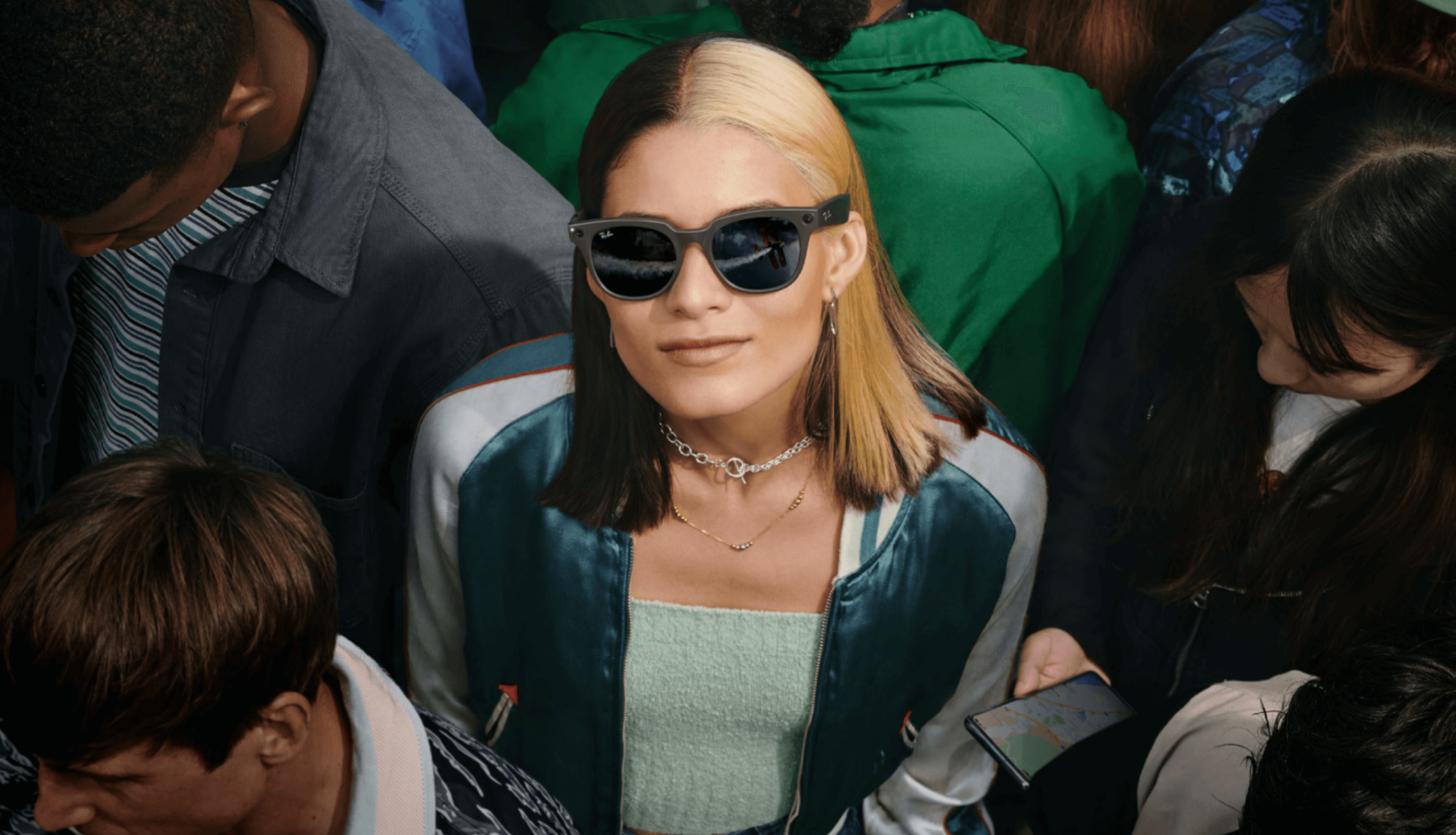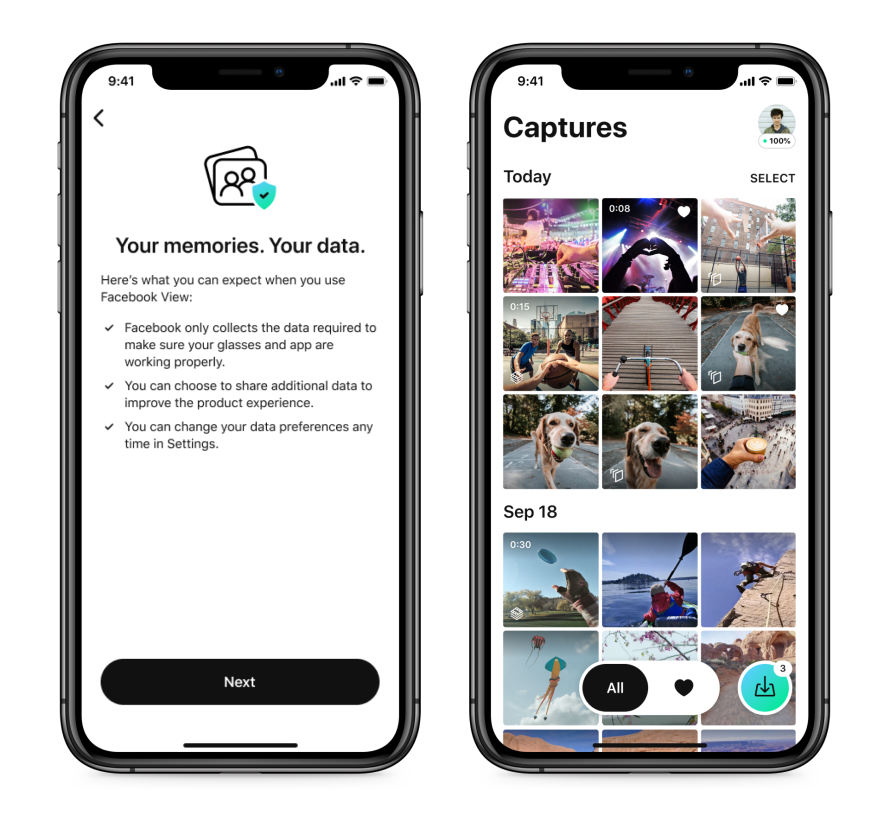 Ray-Ban Stories smart glasses, from Facebook and EssilorLuxottica.
Ray-Ban Stories smart glasses, from Facebook and EssilorLuxottica. Here's the mobile app for editing and sharing photos and videos captured by the glasses.
Here's the mobile app for editing and sharing photos and videos captured by the glasses.
As previously rumored, Facebook has partnered with EssilorLuxottica to produce Ray-Ban Stories, one of the first potentially viable attempts at mass-market smart glasses. They are similar in some ways to early iterations of Snapchat Spectacles but with a more stylish aesthetic that looks right in line with other Ray-Ban glasses.
The glasses have two front-facing cameras, each at 5 megapixels. Users can take a photo either with a touch gesture or with a "Hey Facebook" voice command. So people in the room can tell that pictures or video are being taken, a white LED on the front of the frames will light up. Videos can be as long as 30 seconds.Photos and videos taken with the glasses are sent to a new smartphone app called Facebook View, which offers essential editing and sharing capabilities. In addition to photo and video capture, the glasses allow you to take calls or listen to music and podcasts or with built-in speakers and microphones.
The Ray-Ban Stories are equipped with a Snapdragon processor, but they don't have displays in the lenses. So these are by no means augmented reality (AR) glasses.
The glasses, which Facebook says weigh about five grams more than other typical Ray-Ban glasses, come in five colors and three different frame styles, and there are multiple lens options including prescription, clear, transition, polarized, and sun. Facebook and Ray-Ban say the glasses will get about one day of battery life when it comes to just walking around and taking pictures, but listening to streaming audio will drop that down to just three hours. The glasses come with an AirPods-style charging case that allow you to stretch that out to as much as three days without a power outlet.
These aren’t AR glasses
Given Mark Zuckerberg's past statements about the importance of AR for Facebook's future, the Internet is abuzz with speculation about what this means for the social network's AR strategy.
Our take: not much. These aren't true AR glasses by any definition, and practical AR wearables in this natural-looking form factor are still a few years away from being technologically achievable. There's nothing in this announcement about APIs that will help developers work with Facebook to lay the foundation for future AR experiences.
Contrast that with Snap (whose admittedly non-mass-market AR glasses can actually be used by content creators to develop new kinds of mixed reality content) or Apple (whose ever-expanding APIs like ARKit and RealityKit for the iPhone and iPad will eventually be translatable to wearable devices).
So no, Stories aren't really an AR story. This is just a smart glasses story. But that doesn't mean smart glasses won't "be a thing" in the near future. The runaway success of AirPods, Fitbit wrist devices, and other products suggests that wearables could be just getting started.
Facebook and Ray-Ban's smart glasses go on sale today at most retail and e-commerce outlets that already sell other Ray-Ban glasses, and they start at $299. Stories are available in Australia, Canada, Ireland, Italy, the United Kingdom, and the United States.
Update: We previously wrote that the glasses weigh five grams, but the actual statement from Facebook said that the glasses weigh five grams more than typical Ray-Ban glasses. We have corrected the error above.
Listing image by Facebook
Article From & Read More ( Ray-Ban Stories: These are Facebook’s first mass-market smart glasses - Ars Technica )https://ift.tt/3E480bl
Bagikan Berita Ini














0 Response to "Ray-Ban Stories: These are Facebook’s first mass-market smart glasses - Ars Technica"
Post a Comment